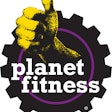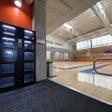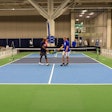Source: National Athletic Trainers’ Association
DALLAS, August 14, 2014 – As young athletes step onto the playing field for preseason practice and to prepare for fall competition on school teams or youth leagues, sports safety and injury prevention are paramount. The National Athletic Trainers’ Association (NATA) is asking parents to ensure their children’s schools have the best sports medicine practices in place.
“It’s important for young athletes to acclimatize to any new sports regimen,” says Larry Cooper, MS, LAT, ATC, chair of the association’s secondary school committee. “With fall comes a renewed energy and commitment to the game or individual competition, and our bodies need time to adjust to temperature, increased activity, range of motion and sport-specific conditioning.”
NATA has issued questions that are vital to ask as young athletes prepare for the fall sports season ahead.
Key Questions Moms and Dads Should Ask Schools and
What They Should be doing to Prepare Kids for Participation
1. Who comprises the school’s sports medicine team? Find out who will provide care to your child in case of an injury, and ask to review their credentials. Many schools and sports teams rely on athletic trainers or parents with medical and first aid training and certification to keep kids safe. NATA also recommends that any medical decisions are made by the school’s sports medicine professionals (physicians and athletic trainers) and not the coach to avoid conflict of interest. Coaches and even the athletes themselves may unconsciously make decisions that favor winning over safety.
2. Does the school/league have an emergency action plan? Every team should have a venue-specific written emergency action plan, reviewed by the athletic trainer or local Emergency Medical Service. Individual assignments and emergency equipment and supplies need to be included. If an athletic trainer is not employed by the school or sport league, other qualified individuals need to be present to render care. Knowing that a school has prepared for an emergency will give parents peace of mind.
3. Is the equipment in working order? Make sure all equipment ranging from field goals, basketball flooring, gymnastics apparatus and field turf are in safe and working order. This also includes emergency medical equipment such as spine boards, splint devices and AEDs (which should be checked once per month; batteries and pads need consistent monitoring and replacing). Accidents can occur in every activity, and that is why the AT should be on site after school to help ensure all equipment is safe and in good order.
4. How qualified are the coaches? A background check should always be performed on coaches and volunteers:
- Coaches should have background and knowledge in the sport they are coaching. They should be credentialed if that is a requirement in the state, conference or league.
- All coaches should have cardiopulmonary resuscitation (CPR), AED and first aid training.
- Coaches should strictly enforce the sports rules and have a plan for dealing with emergencies.
5. Are locker rooms, gyms and shower surfaces cleaned on a regular basis? With the advent of MRSA and related bacterial, viral and fungal skin infections reported in recent years, it is critical to keep these surfaces routinely cleaned and checked for germs. Athletes must be discouraged from sharing towels, athletic gear, water bottles, disposable razors and hair clippers. All clothing and equipment should be laundered and/or disinfected on a daily basis.
6. Does the school have an AED and someone who knows how to use it? Many schools today have automated external defibrillators (AEDs) on site during competitions which if used efficiently and effectively can save a life and stave off a catastrophic situation. Ensure that the medical expert and other personnel know where they are located, how to use them and that they are placed on sidelines during both practice and games.
Preparing kids for sports participation:
7. Get a pre-participation exam: All athletes should have a pre-participation exam to determine their readiness to play and uncover any condition that may limit participation. A young athlete’s underlying medical condition can be exacerbated with vigorous, sustained physical activity.
8. Physical and mental preparation is paramount: Parents, with input from coaches and athletic trainers, should determine whether their children are physically and psychologically ready for the sport/activity level they’re playing. A young athlete should not be pushed into something he/she does not want to do. If an athlete has been injured and is returning to sport, it’s critical for him or her to have the right mind set and confidence to return to play and avoid repeat injury.
9. Share an athlete’s medical history: Parents should complete an emergency medical authorization form, providing parent contact information and permission for emergency medical care for the student athlete. Check with your school/league to obtain the form.
Individual athlete concerns and considerations for the sports medicine team:
10. Beat the heat: Acclimatize athletes to warm weather activities over a 7 to 14-day period. This includes heat acclimatization, hydration and modifying exercise based on environmental conditions, among other criteria. It is suggested that for the first two days in sports requiring protective equipment, only helmets should be permitted; during days three to four only helmets and shoulder pads worn; beginning on day five, all equipment can be worn.
11. Use your head: There are between 1.6 million and 3.8 million brain injuries occurring in sports each year and 63,000 occur in high school sports alone, according to the Centers for Disease Control and Prevention. Be certain the student athlete and medical team are well educated on concussion prevention and management and that the athlete is encouraged to speak up if hit in the head and suffering from any related symptoms including dizziness, loss of memory, light headiness, fatigue, or imbalance to name a few.
12. Be smart about sickle cell trait: All newborns are tested at birth for this inherited condition, and those results should be shared during a pre-participation exam. Red blood cells can sickle during intense exertion, blocking blood vessels and posing a grave risk for athletes with the sickle cell trait. Screening and simple precautions may prevent deaths and help the athlete with sickle cell trait thrive in his or her chosen sport. Be aware of warning signs including fatigue or shortness of breath that may indicate an athlete is in danger.
13. Build in recovery time: Allow time for the body to rest and rejuvenate in between seasons. If the athlete has just finished the basketball season and has his or her sights set on baseball, make sure there is rest time build it to recover from the rigors of grueling months on the court. If athletes don’t make time for recovery, injury can occur. Acclimatizing to the next sport, with appropriate strength, flexibility and balance training, and the supervision of an athletic trainer, will help ensure a healthy season ahead.
14. Pay attention to sport specific injury prevention: Any repetitive motion can lead to overuse injury. With baseball, it may be the turning of the torso and impact on the hip or the repetitive motion a pitcher goes through each time he or she throws a ball. These motions can put added stress on the joints, muscles or ligaments with sudden movement or rigorous activity increasing the change of injury. Following a protocol of flexibility and strength training is integral to a young athletes’ participation.
"It's critical that all members of a school's sports medicine team (athletic trainers, physicians and school nurses) work closely with coaches, teachers, parents and others to ensure appropriate care of the student athlete,” adds Cooper. “Establishing clear and open channels of communication creates a win-win environment all around."
General and published 2014 resources:
2014 Executive Summary of National Athletic Trainers’ Association Position Statement on Exertional Heat Illnesses (an update to 2002 NATA guidelines) https://www.nata.org/sites/default/files/Heat-Illness-Executive-Summary.pdf
Youth Sports Safety Alliance and Fifth Youth Sports Safety Summit (March 2014) https://www.youthsportssafetyalliance.org/summits
Inter-Association Consensus Statement on Best Practices for Sports Medicine Management for Secondary Schools and Colleges https://www.nata.org//sports-medicine-management
National Athletic Trainers' Association Position Statement: Preparticipation Physical Examinations and Disqualifying Conditions: https://www.nata.org/sites/default/files/Conley.pdf
National Athletic Trainers’ Association Position Statement: Management of Sport Concussion: https://www.nata.org/sites/default/files/Concussion_Management_Position_Statement.pdf
Case histories and parent advocate resources available upon request.
About NATA: National Athletic Trainers’ Association (NATA) – Health Care for Life & Sport
Athletic trainers are health care professionals who specialize in the prevention, diagnosis, treatment and rehabilitation of injuries and sport-related illnesses. They prevent and treat chronic musculoskeletal injuries from sports, physical and occupational activity, and provide immediate care for acute injuries. Athletic trainers offer a continuum of care that is unparalleled in health care. The National Athletic Trainers' Association represents and supports 39,000 members of the athletic training profession. Visit www.nata.org or www.athletictrainers.org































